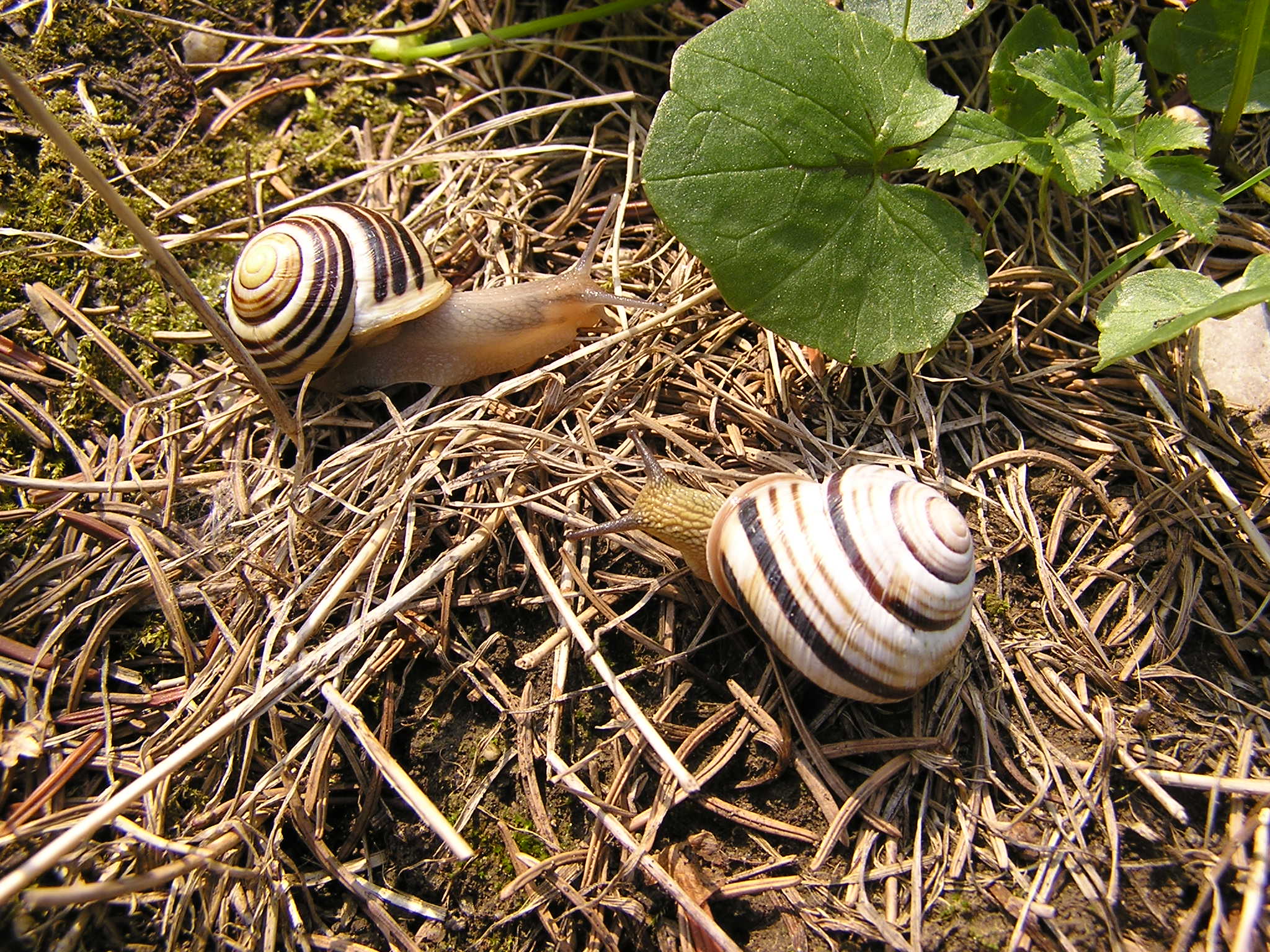Cepaea hortensis
White-Lipped Grove Snail
Synonym(s): Helix subglobosa, Helix hortensis
Class: Gastropoda
Order: Stylommatophora
Family: Helicidae

Photographer: Wikimedia commons
Source: http://en.wikipedia.org/wiki/File:Cepaea_hortensis_and_Cepaea_vindobonensis.jpg
Description
The white-lipped grove snail (Cepaea hortensis) is polymorphic in relation to shell color and markings. Overall shell color can range from light yellow or white to dark brown or black with variations in band color and number. There is also a possible mutated version of the snail that results in a yellow shell with no banding or markings. This high susceptibility to genetic drift is believed to be related to camouflage depending on the surrounding habitat.
Ecological Threat: The white-lipped grove snail, like other snails from the Helicidae family, consume fungus and are known specifically to consume carrion fungus. This creates a risk for humans consuming this species of snail due to the potential for disease or harmful toxin transfer. As an aggressive addition to many gardens and forests, C. hortensis threatens populations of many native snail species by out competing for food sources.
Biology: Consistent with other snail species, the white-lipped grove snail is a hermaphroditic species that can mate to produce offspring or self fertilize. Mating typically occurs in late spring into early summer, but can continue into early fall in climates with warmer weather. The white-lipped grove snail is capable of storing sperm following copulation, allowing for mixed paternal genetic influence. The snail is relatively slow growing with maturity occurring after one year, and has an average life span of 4 years.
History: The white-lipped grove snail was introduced to the United States as an addition to many outdoor gardens. Unlike many other invasive species, this snail was intentionally introduced.
Habitat: With a preference to mild and damp conditions, the white-lipped grove snail is active during the daytime and often located near vegetation for shelter and food. This snail commonly feeds on nettles, ragwort, and hogweed plants, and can be found in wetlands, parks, sand-dunes, forests, and on rocks.
Distribution
Native Origin: Western and Central Europe
U.S. Present: KY, MA, NY, TX, VA, VT
Texas: Gilchrist, TX
Resembles/Alternatives
The white-lipped grove snail is similar in appearance to the brown-lipped banded snail (Cepeae nemoralis). The white-lipped snail can be identified by a thinner shell and whirls that are more rounded. The namesake appearance of a white or brown lip can't be relied on for identification due to the polymorphic nature of each species.
Management
It is important to take time to fully clean and sanitize snails before consumption to prevent disease transfer or ingestion of harmful toxins.
References
Cook, L. M., and James Murray. 1966. New information on the inheritance of polymorphic characters in Cepaea hortensis. Journal of Heredity 57(6): 245-247.
Internet Sources:
http://www.arkive.org/white-lipped-banded-snail/cepaea-hortensis/
http://eol.org/pages/449908/overview
http://idtools.org/id/mollusc/factsheet.php?name=Cepaea%20hortensis
 Texas Invasive Species Institute
Texas Invasive Species Institute